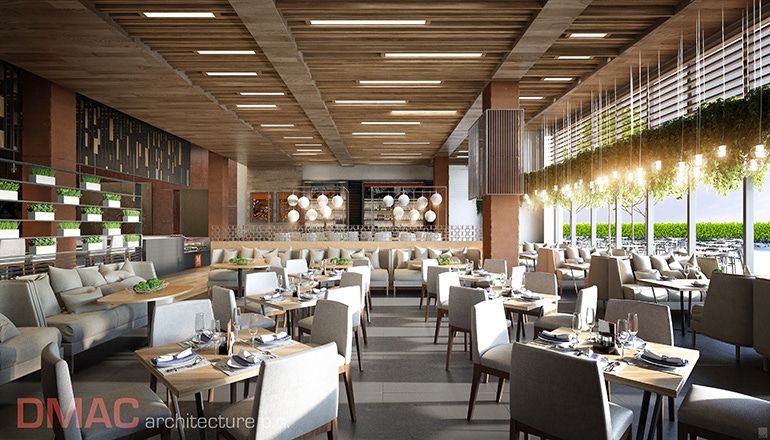Restaurant industry employment still down 2.3 million jobs at the end of 2020 as establishments look to reopen.

Data suggests that the overall outlook for the restaurant industry has improved in recent months, according to an update from the Biden administration. Specifically, the restaurant industry has added 450,000 jobs since January, but remains down 1.8 million jobs compared to February 2020.
Unfortunately, many restaurants and bars remain partially closed, with reduced revenue and significant pandemic-related debt. In the weeks ahead, the Small Business Administration will prioritize getting the allocated $28.6 billion in Restaurant Revitalization Funds relief to hard-hit businesses so they can keep their doors open.
The White House reports the share of restaurant and bar owners planning to hire in the next six months has nearly doubled, from just 30% in January to more than 57% in mid-April.
The share of restaurant and bar owners that have returned to normal operations has more than doubled since January and the share expecting to return to normal operations in the next six months has increased from just 17% to more than 26%.
Prior to the COVID-19 pandemic, the restaurant and bar industry was one of the fastest-growing sectors of the U.S. economy. From 2009 to 2019, the number of restaurants, bars, and other food and beverage places grew by 19%, from 548,000 establishments to 654,000 establishments. Over the same period, employment grew by 28% (or 2.7 million jobs), from 9.4 million to 12 million employees. And, the industry’s annual retail sales grew by 70%, from $453 billion to $774 billion. In 2019, this industry represented 2.3% of U.S. GDP.
The restaurant industry has suffered disproportionately during the pandemic. Nearly half of all restaurant, bar, and other food and drinking place workers (6 million people) lost or left their jobs between February and April 2020. While employment rebounded as pandemic-related shutdowns and restrictions eased, the industry was still down 2.3 million jobs at the end of 2020.
Consistent with the decline in employment, monthly retail sales at restaurants, bars, and other food and drinking businesses fell by more than half in the early months of the pandemic, from $66 billion in February 2020 to $30 billion in April 2020. The industry ended the year with $623 billion in retail sales, 19% lower than 2019.
While the true number of restaurants and bars permanently lost during the pandemic may not be known for some time, research suggests that more than 400,000 small businesses across industries have permanently closed and millions more are struggling to make ends meet.
Previous relief
In the last several months, the Small Business Administration (SBA) delivered more than $31 billion in relief to restaurants and bars.
SBA approved more than 337,000 forgivable loans worth $31 billion to small restaurants and bars through the Paycheck Protection Program. PPP has served as a lifeline to millions of businesses that struggled to remain open during the pandemic.
By implementing a series of program and policy changes to improve access for sole proprietors, open up the program business owners with delinquent student loan debt prior non-fraud felonies, and engage in focused outreach and education targeting the smallest businesses, the 2021 round of PPP has also seen real improvements in equity of outcomes.
Across industries, 95% of PPP loans have gone to businesses with less than 20 employees while the share of PPP funds going to rural businesses has increased by 20 percent from the 2020 program round. Additionally, the average loan size in 2021 is roughly $45,700, down by more than half from an average size of $101,000 in 2020.
SBA also approved more than 4,000 long-term, low-interest loans worth $438 million to small restaurants and bars through the COVID-19 Economic Injury Disaster Loan program. The COVID EIDL program has enabled millions of small businesses – including small restaurants and bars –to meet financial obligations and operating expenses in the wake of the pandemic.
In 2021, the current administration took steps to increase the amount of support available through the COVID EIDL program by raising the loan limit to 24-months of economic injury with a maximum loan amount of $500,000. This summer, SBA will further increase the cap on COVID EIDL loans up to $2 million, which is the maximum allowed by statute. These changes will unlock billions of dollars in additional funding to restaurants and bars who previously received the maximum loan amount.
SBA also approved $29 million in flexible Targeted EIDL Advance grants to more than 4,000 hard-hit small restaurants and bars in low-income communities. The COVID-19 Targeted EIDL Advance program provides advance funds of up to $10,000 to small businesses – including small restaurants and bars – that are located in low-income communities and have suffered revenue losses of more than 30%.
The American Rescue Plan passed earlier in 2021 included an additional $5 billion for the Supplemental Targeted EIDL Advance Program, which will offer grants to the smallest, hardest-hit businesses in America, including many including restaurants and bars.
About the Author(s)
You May Also Like





